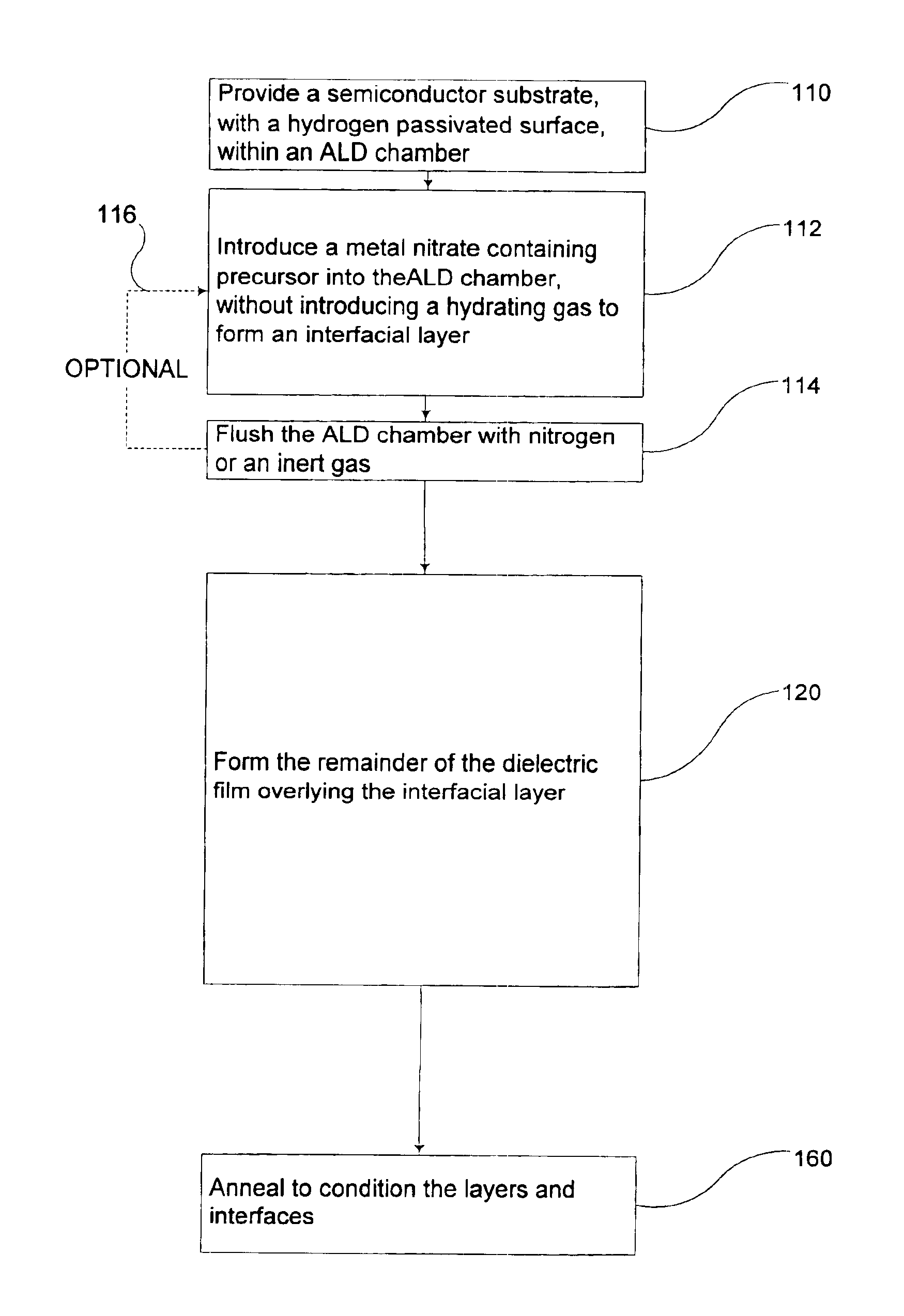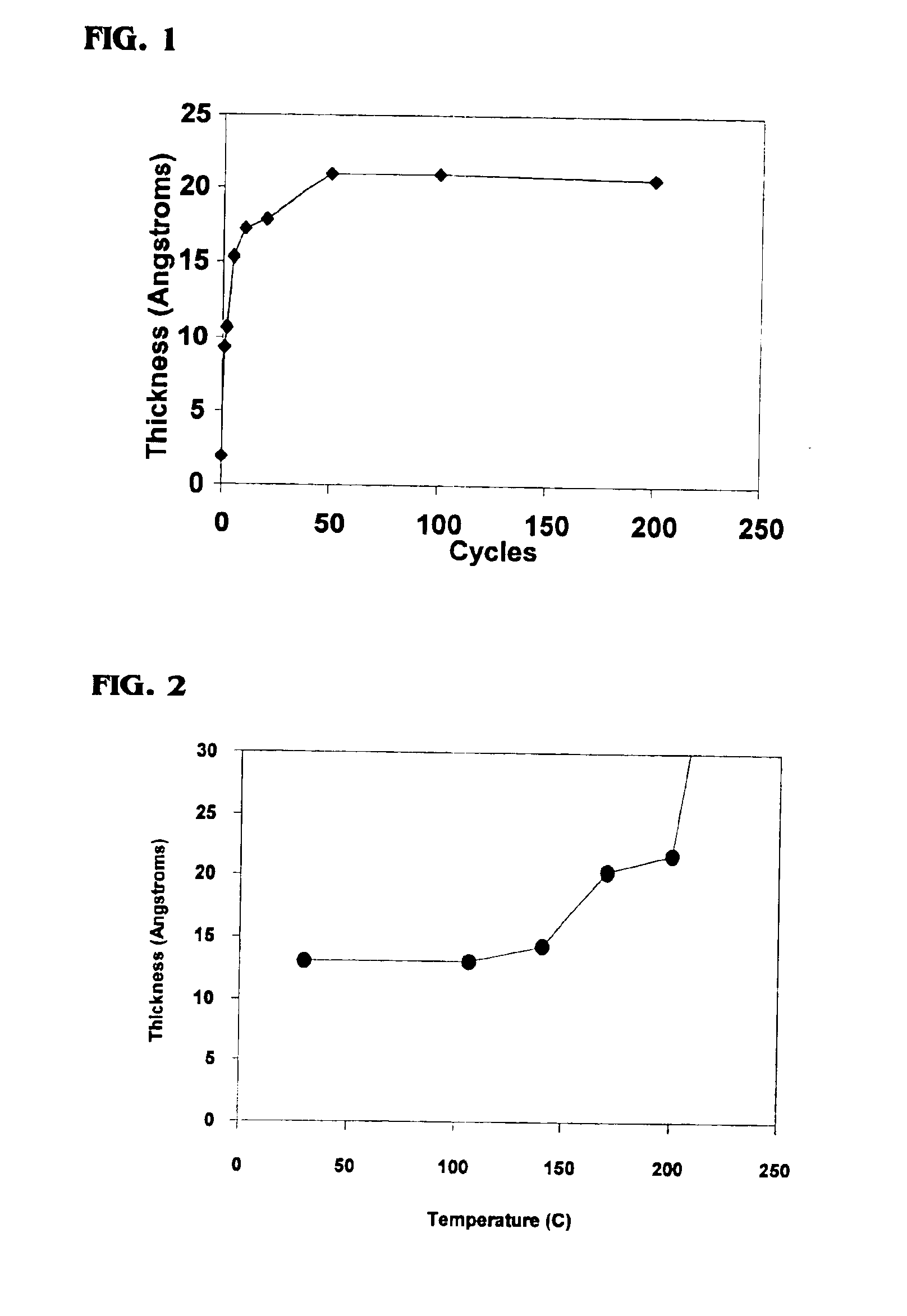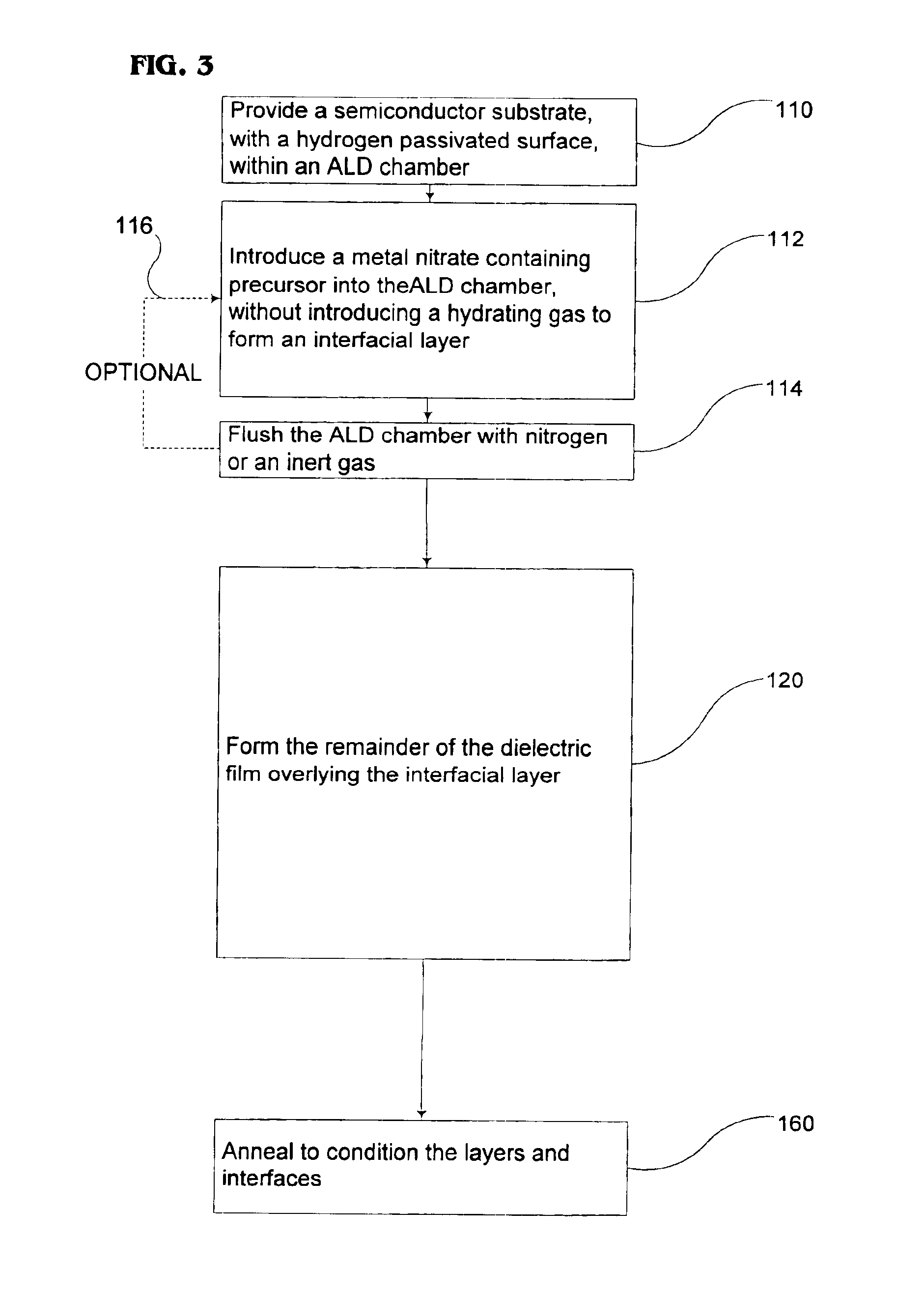Method to control the interfacial layer for deposition of high dielectric constant films
a technology of high dielectric constant and interfacial layer, which is applied in the field of thin film formation, can solve the problems of low dielectric constant, inability to use silicon dioxide interfacial layer as gate dielectric in cmos devices, and inability to achieve the effect of reducing the dielectric constant, and reducing the thickness of the film
- Summary
- Abstract
- Description
- Claims
- Application Information
AI Technical Summary
Benefits of technology
Problems solved by technology
Method used
Image
Examples
Embodiment Construction
FIG. 1 is a chart showing the film thickness in angstroms of an interfacial layer formed using a M(NO3)x precursor (where M is metal and x is the valence of M), in this example Hf(NO3)4. Generally, M may be Hf, Zr, Gd, La, Ce, Ti, Y, Ta, or Al. The interfacial layer was formed by providing a hydrogen passivated semiconductor surface, in this case hydrogen terminated silicon, in an ALD chamber, and exposing the surface to cycles comprising two seconds of Hf(NO3)4 and ten seconds of N2 at a temperature of approximately 170 degrees Celsius. This interfacial layer initially increases with the number of cycles, but then saturates or self-limits. As shown, using Hf(NO3)4 at 170 degrees Celsius this saturation occurs after about 50 cycles, or 100 seconds total pulse time, of Hf(NO3)4. The interfacial layer shown in FIG. 1 saturates, or self-limits, at between approximately 20 and 22 angstroms. The interfacial layer is preferably a high-k material. A high-k material refers to a material wit...
PUM
| Property | Measurement | Unit |
|---|---|---|
| temperature | aaaaa | aaaaa |
| temperature | aaaaa | aaaaa |
| dielectric constant | aaaaa | aaaaa |
Abstract
Description
Claims
Application Information
 Login to View More
Login to View More - R&D
- Intellectual Property
- Life Sciences
- Materials
- Tech Scout
- Unparalleled Data Quality
- Higher Quality Content
- 60% Fewer Hallucinations
Browse by: Latest US Patents, China's latest patents, Technical Efficacy Thesaurus, Application Domain, Technology Topic, Popular Technical Reports.
© 2025 PatSnap. All rights reserved.Legal|Privacy policy|Modern Slavery Act Transparency Statement|Sitemap|About US| Contact US: help@patsnap.com



